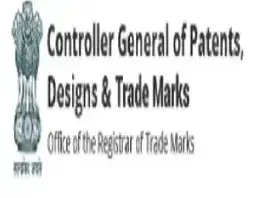Myanmar: New Trademark Law Update – Commencement of 2nd Phase of Soft Opening Period

By Arpit Kalra and Abhishek Chandok
OFFICIAL FEE FOR FILING/ REGISTRATION AND TM-2 FORM (POA) ANNOUNCED!
The Myanmar Intellectual Property Department (IPD) after conducting various events/ seminars for the trademark agents with respect to the new Trademark Law in the previous months, has now commenced the much-awaited new trademark law in Myanmar, which has come into force from April 01, 2023.
The 2nd Phase of the Soft Opening Period under the new trademark law has finally commenced as of April 01, 2023, and with the start of the 2nd phase of the Soft Opening Period, the TM-2 form i.e., POA and the Official Fees have also finally been announced.
OFFICIAL FEE ANNOUNCED FOR NEW TRADEMARK APPLICATIONS
The IPD has announced the official fee for filing the trademark application as USD 72 and once the examination stage is completed and the registration is granted, another USD 72 will have to be paid / submitted for issuance of the registration certificate. Further, a 5% govt. tax shall be levied to the said fee before submitting the same with IPD.
The said fee applies to all applications already re-filed under the Soft Opening Period and to be filed under the Grand Opening Period (date of which has not been announced yet).
The notification in local language regarding the official fee can be accessed from the said link.
RELEASE OF FORM TM-2 i.e., POWER OF ATTORNEY
The IPD has released the draft form TM-2 i.e., the Power of Attorney which needs to be submitted by each Applicant who has already filed/ is willing to file application under the new law. The TM-2 form will need to be signed by the Applicant and requires notarization before a Notary Public.
It has been announced that for those Applicants who have applied for multiple marks under the first phase of Soft Opening Period, an attachment (including all the marks) alongwith the POA will have to be submitted with the IPD for so that multiple TM-2 Forms for each mark separately are not required.
In case an Applicant wishes to submit one single POA alongwith the Attachment including all the marks, the attached documents will need to include the notarization stamp or seal on each additional page.
Draft POA can be accessed from the said link.
COMPLETION OF APPLICATION UNDER 2ND PHASE OF SOFT OPENING PERIOD
Once the notarized TM-2 Form and the official fees have been duly / submitted with the IP Dept, the application will be deemed completed and will receive the filing date of the Grand Opening Day (which is yet to be announced by the IPD).
Should you require any further clarification or information with respect to the new trademark law in Myanmar, please feel free to contact us.
Related Posts
CGPDTM Issues Notice regarding Abandoned Trademark Applications

By Bhanu Dhingra and Prabhjot Kaur
In furtherance to the Public Notice dated February 06, 2023 notified in the Trade Marks Journal No. 2090[1] , the Office of the Controller General of Patents, Designs and Trade Marks (CGPDTM), Mumbai in Trade Marks Journal No. 2097 dated March 27, 2023 [2], has now published a list of applications in respect of which the Applicants/ Agent have not submitted the Non-cash receipt (NCR) or any other document sufficing that a reply to Examination Report has been filed till March 20, 2023.
The notice clarifies that the Registry had given an opportunity to Applicants/ Agents to submit supporting documents regarding submission of reply to the Examination Report and it had received some submissions which are being reviewed by the Registry for verification. In the instant Public Notice dated March 27, 2023, the Registry has published the remaining applications as Annexure-1 which excludes the submissions received by Registry till March 20, 2023, through email notices. The Applications which are published as Annexure-1 along with the said notice are treated as ‘abandoned’ under Section 132 of the Trade Marks Act, 1999 and Rule 33(4) of the Trade Marks Rules, 2017.
Further, the Registry has given another opportunity to Applicants/ Agents of published applications, who have replied to the examination reports within the prescribed time, to submit and notify the NCR (Non-Cash Receipt) or any other documents sufficing submission of reply to the examination report, to Grievance Cell of the Registrar of Trade Marks, Mumbai within a period of 45 days from date of the notice, i.e., till May 11, 2023.
The notice further states that the grievances are required to be filed through the Head of Office of the respective Trade Marks Registry in physical form for scrutiny by Grievance Cell of Mumbai. In case of any further clarifications, the cell will approach the Applicants/ Agents of such applications while reviewing their abandoned applications.
Opposition
In February 2023, the Office of the Controller General of Patents, Designs, and Trademarks (CGPDTM) also issued a public notice, stating that applications in which trademark oppositions had been filed and notices of opposition had also been served by the Trade Marks Registry (TMR) to the Applicant, and no counter statement was received within the prescribed time as prescribed by the Act and Rules, the same shall be ‘deemed to have abandoned’ as per the provision of Section 21(2) of the Trade Marks Act. The Registry had also published a rather voluminous list of such applications, and had further given time of 30 days to Applicants to show that they had in fact filed the said documents within time. You may read our article on the same here.
In this regard, the Registry has now issued another public notice on March 27, 2023, acknowledging that they had received some submissions in light of the public notice dated February 06, 2023, and the same is being reviewed by the Registry. The Registry has also published another list of applications (excluding the submissions which are under review), which have now been abandoned/ treated as ‘deemed to have been abandoned’ under Section 21(2) of the Trade Marks Act, 1999. However, the Registry has given yet another opportunity to Applicants/ Agents of published applications, who have duly filed the counter statements within the prescribed time, to submit and notify the NCR (Non-Cash Receipt)/ CBR (Cash Book Receipt) or any other documents sufficing to file of the counter statement within the prescribed time, to the Grievance Cell of the Registrar of Trade Marks, Mumbai, within a period of 45 days from the date of the notice, i.e. till May 11, 2023.
[1]https://ssrana.in/articles/abandonment-of-marks-under-ipindia/
[2]https://search.ipindia.gov.in/IPOJournal/Journal/ViewJournal
Related Posts
CGPDTM’S Notice for Streamlining the Trade Marks Show- Cause Hearings
Issuance of Orders in Matters which are amicably settled by Parties- CGPDTM
A Hope for GUI Registration under Design Laws in India

By Vikrant Rana and Dhruv Mathur
A graphical user interface (GUI) is an interface which helps a user to interact with the electronic device(s). For example, the use of icons, menus and other visual indicators or representations (graphics) present in computers, tablets, smartphones, etc. The concept of GUI contemplates visual representation of configuration of icons and several elements on a touch screen. GUI is also used as a powerful differentiation of products and user experience with the ultimate aim of influencing customer decision when buying such products.
GUIs have been always in question under the Indian Design laws, as per their registrability. However, in a recent judgment by the Hon’ble High Court of Calcutta, special jurisdiction, in the matter of UST GLOBAL (SINGAPORE) PTE LTD vs. THE CONTROLLER OF PATENTS AND DESIGNS AND ANR, wherein the court has given a positive hope pertaining to GUI registrability under Design Laws in India.
The appellant, a global leading provider of end-to-end IT services and solutions for different companies, being the applicant of a design application bearing Application no. 298921 filed on October 30, 2017 for registration of a design titled “Touch Screen” for a novel surface ornamentation which is a Graphical User Interface (GUI).
Despite the registration of GUI designs to Microsoft and the Design Rules 2008 amendments, Amazon’s application (Application No. 240305) pertaining to a “Graphic user interface for providing supplemental information of a digital work to a display screen” was disallowed protection by the Indian Patent Office.
The stand taken by the Controller was that GUIs do not qualify as designs under Section 2(a) and (d) of the Designs Act. The Controller’s objection was based on the reasons that the GUI was only operative when the computer was switched on and thus, it did not provide “consistent eye appeal”, GUI did not qualify as an article of manufacture, GUI was not physically accessible, and GUI design did not come under the ambit of the Act.
REFUSAL ORDER
The said design application was refused by the Assistant Controller of Patents of Designs under the Designs Act, 2000 on the grounds that:
- a GUI is incapable of design registration.
- It has also been held that since the GUI is only visible when it is in ‘ON’ mode or operating mode there can be no design when the product is on ‘OFF’ mode. Hence, GUI cannot be treated as a design of any article.
- It has also been found that the ICON/GUI does not follow the process of industrial manufacturing but is mainly created by software development processing.
CONTENTION BY THE APPELLANT
The appellant contended that the impugned order is erroneous and is liable to be set aside. The following points were set forth by the appellant:
- That GUI is a software, an intellectual property, an article of value hence capable of registration.
- That the subject design is original and has never been in the public domain.
- That GUI can positively influence customers in buying such products.It is important to read the section 2(a) and 2(d) of the Design Act, 2000, which recites:(a) “article” means any article of manufacture and any substance, artificial, or partly artificial and partly natural and includes any part of an article capable of being made and sold separately.(d) “design” means only the features of shape, configuration, pattern, ornament or composition of lines or colours applied to any article whether in two dimensional or three dimensional or in both forms, by any industrial process or means, whether manual, mechanical or chemical, separate or combined, which in the finished article appeal to and are judged solely by the eye; but does not include any mode or principle of construction or anything which is in substance a mere mechanical device, and does not include any trade mark as defined in clause (v) of sub-section (1) of section 2 of the Trade and Merchandise Marks Act, 1958 (43 of 1958) or property mark as defined in section 479 of the Indian Penal Code (45 of 1860) or any artistic work as defined in clause (c) of section 2 of the Copyright Act, 1957 (14 of 1957).
- The 2008 amendment of the Design Rules 2001 provides for an elaborate classification of goods and articles on which designs can be applied and registered. The Locarno Classification included Class 14-02 and 14-04, which specifies articles belonging to “Screen Displays and Icons”, recognized in the Design Rules (Amendment) 2019. Additionally, the amendments made in 2021 to the Design Rules, 2008, introduced a new Class 32 containing graphic symbols, graphic designs, logos, ornamentation, and surface patterns.
- Regarding the GUI is visible only in ON mode or operating mode, the appellant contended that:
- the GUI in the present case is in-built. In-built ICONS are displayed in shops as well as in advertisements.
- Designs registered may be applied to any external or internal feature and are capable of registration if they appeal to the eye and enhance the aesthetic value of the product. Ordinarily, the design of a product is concerned with the external appearance of an article.
- The appellant also took support of few case laws, such as:
- Gramaphone Company Ltd. Vs. Magazine Holder Company (1910) 27 R.P.C. 152.
- P. Ferrero and CSPA’s Application (1978) RPC 473.
- With respect to the contention regarding section 2(d) of the Design Act, 2000, the appellant contended that the impugned design was a 2-D design i.e., a design which possesses the dimensions of length and width but does not possess depth. The novelty of the same can be judged by the eye as soon as the device is turned on. There is no requirement to touch the device in respect of the design. The process of application of the subject design i.e. GUI on the finished article is a mechanical and manual process which falls within the definition of “industrial process” mentioned in section 2(d) of the Designs Act 2000.The appellant also explained the industrial process that a software developer develops a source code, which creates the GUI, which is then embedded in the micro-controllers and micro-processors and is displayed in screen by illuminating pixels by electronic means. Further, the appellant took support of the following case laws:
- Re: Apple Computer Inc.’s Design Applications [2002] F.S.R. 38.
- K.K. Suwa Seikosha’s Design Application [1982] R.P.R. 166.
The matter is now remanded back to the Controller for consideration afresh within a period of three months from the date of communication of this order.
This article was first published on Bar & Bench- here
Related posts
The Legal Metrology (Packaged Commodities) Amendment Rules, 2023

By Rupin Chopra and Apalka Bareja
Background
The Ministry of Consumer Affairs, Food and Public Distribution vide its notification dated November 02, 2021 had notified the Legal Metrology (Packaged Commodities) Amendment Rules, 2021 as per which the following amendments were introduced and were to come into force from April 01, 2022–
- Packaged grouped together for retail sales must comply with each mandatory declarations.
- The unit price is to be declared on package along with the MRP in Indian Rupees.
- Format prescribing the manner in which Unit price is to be declared on every package.
However, the aforementioned department vide its notification dated March 28, 2022 further amended the Legal Metrology (Packed Commodities) Rules, 2021. The said rules were to come into force on October 01, 2022 as per which the following amendments were to be effective-
- The unit sale price in rupees, rounded off to the nearest two decimal place, shall be declared on every pre-packaged commodities as follows:
- per gram where net quantity is less than one kilogram and per kilogram where net quantity is more than one kilogram;
- per centimeter where net length is less than one metre and per metre where net length is more than one metre;
- per mililitre where net volume is less than one litre and per litre where net volume is more than one litre;
- per number or unit if any item is sold by number or unit:
Provided that for packages containing alcoholic beverages or spirituous liquor, the State Excise Laws and the rules made thereunder shall be applicable within the State in which it is manufactured.
Provided further that declaration of unit sale price is not required for the pre-packaged commodities in which retail sale price is equal to the unit sale price.
- The Second Schedule which specifies the quantities of commodities by weigh, measure or number and Rule 33, sub-rule (2) has been omitted.
- No prosecution will be initiated against the manufacturer or packer or importer of pre-packaged commodities for making declaration with effect from April 01, 2022 in accordance with Legal Metrology (Packaged Commodities) Rules, 2021.
CURRENT SCENARIO
The Ministry of Consumer Affairs, Food and Public Distribution, now, vide its notification dated March 24, 2023 has notified the Legal Metrology (Packaged Commodities) Amendment (Amendment) Rules, 2023.
The said rule further amends, the Legal Metrology (Packaged Commodities) (Amendment) Rules, 2022, rule 1, sub-rule (2), for the figures, letters and words “1st day of April, 2023”, the figures, letters and words “1st day of June, 2023” shall be substituted.
The aforementioned thus implies that the amendments as prescribed in the Legal Metrology (Packaged Commodities) Rules, 2023 shall now be effective from June 01, 2023.
Utkarsh Aswal, Intern at S.S. Rana & Co. has assisted in the research of this Article.
Related Posts:
Legal Metrology (Packaged Commodities) Amendment Rules, 2022 w.e.f. April 01, 2023
Standard Form of Insurance Contracts and Consumer Rights- India

By Nihit Nagpal and Devika Mehra
One of the essential ingredients of the formation of a contract is “free consent” of both the parties. The same has also been provided under Section 14 of the Indian Contract Act, 1872. This implies that both the parties shall be free to negotiate upon the terms of the contract. However, there are few contracts such as Insurance Contracts, Loan/Mortgage Deed, etc. which are drafted by the company itself and the customer has no scope of negotiating the terms. Such contracts are termed as standard form of contracts or adhesion contracts. Many a times, the party which drafts such contracts are adversely benefitted with unilateral or exclusion clauses.
Recently, in M/S Texco Marketing Pvt. Ltd. v. TATA AIG General Insurance Company Ltd. & Ors.[1] (“Texco”), the Hon’ble Supreme Court was dealing with a case pertaining to a similar issue. In this case, the insurer issued an insurance policy to a shop owner for the shop. The insurance contract included an exclusionary clause which prevented the insurer from providing insurance amount in some situations. When a fire broke out in the shop, the shop-owner approached the insurance company for the insurance amount. However, the company invoked the exclusion clause and denied the claims of the shop-owner. The Hon’ble Supreme Court, while dealing with a civil appeal, took a critical view of the exclusion clauses in standard forms of contract.
Interpretation of Exclusion Clause in Standard form of contracts
The Court interpreted that exclusion clauses were to be interpreted as “touchstone of the doctrine of reading down in the light of the underlying object and intendment of the contract.” The Court referred to the judgment in Glynn v. Margetson & Co.[2] where it was held that entire provisions could be rejected if they defeated what was the main purpose of the contract. The Hon’ble Court held that an Exclusion Clause imposes an onus as well as the burden on the insurer when reliance is made on such a clause. This makes insurance contracts special contracts as they are premised on the notion of good faith. The exclusion clause is not a leverage or a safeguard for the insurer, but is meant to be used in case of a contingency.
Doctrine of Blue Pencil
The Blue Pencil doctrine states that if a court finds that portions of a contract are void or unenforceable, but other portions of the contract are enforceable, the court may allow the legally valid, enforceable provisions of the contract to be enforced. The Court referred to the judgment in Beed District Central Coop. Bank Ltd. v. State Of Maharashtra[3] where the court interpreted that “This doctrine holds that if courts can render an unreasonable restraint reasonable by scratching out the offensive portions of the covenant, they should do so and then enforce the remainder.” Thus the Court concluded that a clause that was detrimental to the execution of the contract ought to be effaced.
Stand taken by Insurance companies/dominating parties to contract
It is usually argued that insurance contracts are special contracts based on the principle of uberrima fides which requires full disclosure by the person who seeks insurance cover. The customer has to disclose all material facts and risks involved. In essence, it argued that insurance contracts are based on good faith and therefore, the insurer has the right to set the terms of contract merely to balance the scales of convenience and equity.
In an early English case, Carter v. Boehm[4], Lord Mansfield has succinctly explained the principle of disclosure and says that “Insurance is a contract of speculation”. He further states: “Good faith forbids either party, by concealing what he privately knows, to draw the other into a bargain from his ignorance of the fact, and his believing the contrary.” The principle of uberrima fidei is used as a shield to justify the stipulation of an exclusionary clause in insurance contracts.
Principles of equity and contra proferentem in contract law in India
The principle of equity applies to both parties to the contract. In an insurance contract, the insurer must do equity by keeping the terms fair, whereas the customer must do equity by making full disclosure to the insurer. Lord Denning in George Mitchell (Chesterhall) Ltd. v. Finney Lock Seeds Ltd.[5] succinctly states that Insurance contracts are “take it or leave it contracts” and the “little man would never read the exemption clauses or understand them.”
Equal bargaining power between parties to contract was explained by the Hon’ble Supreme Court in Central Inland Water Transport Co. & Anr. v. Brojo Nath & Anr.[6] The Court observed that there can be myriad situations which results in unfair and unreasonable bargains between parties possessing wholly disproportionate and unequal bargaining power. The Court acknowledged that if standard contracts embody the set of rules also, and provide unequal bargaining power, if unconscionable, would be unfair and unreasonable. However, the court held that each case must be judged on its own facts.
Apart from the principles of equity, the courts also apply the doctrine of contra proferentem where the contract appears to be vague. While applying this doctrine, the courts interpret the contract in a way which favours the party which has not drafted the agreement. The Indian Courts have often applied this principle in various cases while dealing with issues pertaining to insurance contracts drafted by companies. In Bank of India and Anr. v. K. Mohandas and Ord.[7], “32. The fundamental position is that it is the banks who were responsible for formulation of the terms in the contractual Scheme that the optees of voluntary retirement under that Scheme will be eligible to pension under Pension Regulations, 1995, and, therefore, they bear the risk of lack of clarity, if any. It is a well-known principle of construction of contract that if the terms applied by one party are unclear, an interpretation against that party is preferred.”
Parties who are the beneficiaries of insurance scheme often fall back on these principles to strengthen their claims whenever the contract appears to be titled towards the company.
Conclusion
The recent decisions of Supreme Court on contract law pertaining to insurance contracts have been progressive and has endeavoured to balance the scales of justice and equity between the contracting parties. The decision in Central Inland Water and in M/S Texco Marketing cases collectively balance the bargaining powers between parties, in order to ensure that the customer is compelled to sign merely on the dotted lines of the contract offered by the company. However, the Supreme Court and the Hon’ble High Courts have still maintained that Insurance contracts are based on risk, and equally the rights of the companies cannot be entirely curtailed to stipulate an exclusionary clause. Ultimately, contracts must be in consonance with the public policy and laws of India.
[1] M/S Texco Marketing Pvt. Ltd. v. TATA AIG General Insurance Company Ltd. & Ors.,Civil Appeal No. 8249 of 2022.
[2](1893) A.C. 351
[3]2006 BOMCR SC 6 542
[4] Carter v. Boehm, (1766) 3 Burr 1905
[5] George Mitchell (Chesterhall) Ltd. v. Finney Lock Seeds Ltd., (1983) Law Reports Q.B. 284.
[6] Central Inland Water Transport Co. & Anr. v. Brojo Nath & Anr., 1986 SCC (3) 156 1986
[7] Bank of India and Anr. v. K. Mohandas and Ors., (2009) 5 SCC 313.
Related Posts
Confidentiality Agreement with Employees, Contractors and Vendors
Exemption clause in Insurance contracts to be construed against Insurer in case of ambiguity: SC


